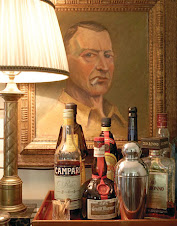
A love story and a great gift to the nation.
by Shirley Moskow (Independent), Jul-31-09
Walking hand-in-hand along a New York street, the elderly couple seem unremarkable. He is stooped with age and uses a cane. She is still spry and gently helps him. Profiled in the prize-winning film, “Herb and Dorothy,” the Vogels look like a granny and a grampa - straight out of central casting.
Appearances are deceiving. Megumi Sasaki’s documentary reveals an extraordinary couple. The film screened earlier this year at the Jewish Film Festival and is now at the Landmark Theater, Kendall Square, Cambridge.
“Herb and Dorothy” is a subtle gem that succeeds on many levels. It is an endearing love story about an unassuming couple, now in their eighties, who amassed a world-class collection of modern art on a shoe-string budget. It is also an entertaining crash course in the important art movements of the second half of the 20^th century.
Most important, it celebrates a gift of unmatched generosity to the nation. The couple, who have lived all of their married life in a rent-controlled, one-bedroom Manhattan apartment, donated their multi-million dollar art collection to The National Gallery of Art, Washington, DC. It will be exhibited later this year.
Many films feature artists. Sasaki wasn’t aware of any about art collectors. She was intrigued that the Vogels had acquired their collection on a modest budget. After she met them at an art event at Gracie Mansion, the official residence of the mayor of New York, she determined to tell their story. Her skillful weaving of old photographs, historic film clips, newspaper headlines, and footage of Herb and Dorothy at home and with artists in galleries presents an intimate profile of an engaging couple.
Herb’s passion for art started long before he met Dorothy in 1950. The son of Russian emigrants, he grew up in New York City. He worked the night shift as a postal clerk so that he’d have days free to paint, take art classes, and spend hours poring over art books at the library.
He met Dorothy at a large party. He was attracted to the slim, dark-haired girl across the room because, he says, “She looked intelligent.”
“And cute, too, I hope,” Dorothy teases, more than half a century later. She’d grown up in the small town of Elmira, NY. It bored her. A friend invited her to New York City. She didn’t hesitate. With her freshly minted master’s degree, she found a position as librarian at the Brooklyn Public Library.
“I didn’t know anything about art,” says Dorothy, but she found Herb’s enthusiasm irresistible. They honeymooned in Washington, DC. Their first stop was The National Gallery of Art, where Herb treated his bride to a lesson on the history of art.
Back in New York, they settled into a comfortable married life. Dorothy attended art classes. They paid their living expenses from her earnings. Herb’s salary bought art. They haunted art galleries and attended openings, where they met artists, who became their friends. Now some artists call every week to let the Vogels know what they’re working on.
“There wasn’t a market for what we were doing,” says Herbert Mangold, one of the first artists they collected. “The money was very useful.” They bought Robert Rauchenberg, Chuck Close, Robert Motherwell, Donald Judd, and Jeff Koons, among others, long before their art became fashionable commodities. And they collected in depth, following the artists’ development.
“It was like a hunger, they couldn’t satisfy,” one artist comments. When their apartment walls were covered, they hung art from the ceiling. The art under their bed was piled so high it raised the mattress.
“They were greedy,” says Linda Bengali, an artist represented in their collection. “Thank God they were greedy.”
The Vogels have no children. They thought about the future of their collection. They considered offers from several museums. The National Gallery of Art was interested, but couldn’t meet the prices bid by museums. Nevertheless, the Vogels chose to gift their collection to The National Gallery. They reasoned that they had made their money at government jobs and giving back seemed right. They liked, too, that the National Gallery does not deaccession. There were too many pieces for the National Gallery, however, so Herb and Dorothy are giving fifty pieces to a museum in each of the fifty states.
Herb and Dorothy’s gift to the people of The United States is unique, according to the film. There are no collectors in any country in the world who have given everything they have to their country.
Adaptive reuse: Chateau of the Hertford British Hospital
-
Buildings with specific uses often find themselves out of a job so to
speak. Rather than tear down (often wonderful) old buildings, rehabbing
them is the...
5 months ago

















1 comment:
Very interesting. We're lucky the collection will be here in DC!
Post a Comment